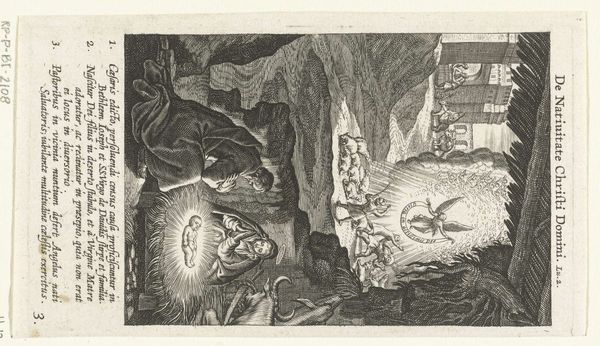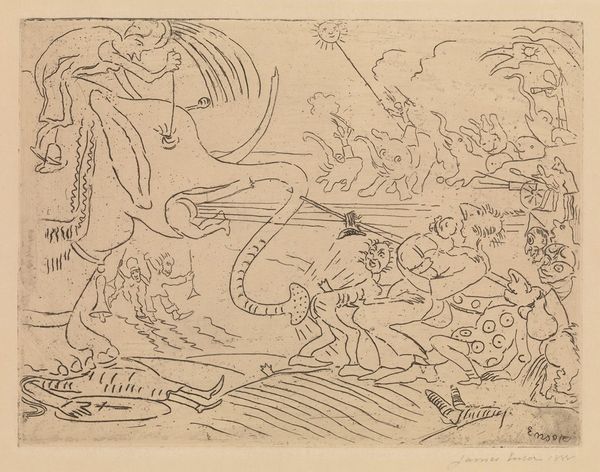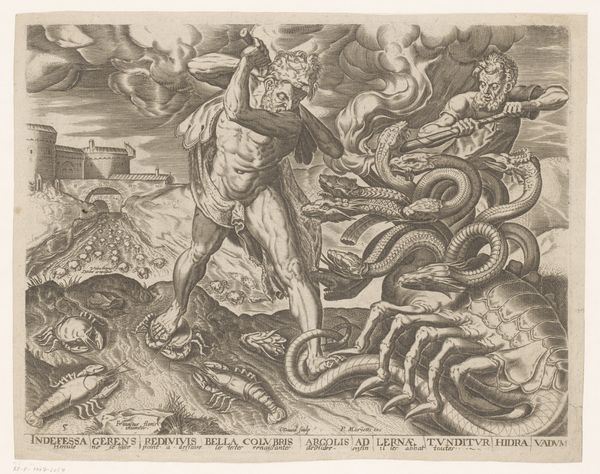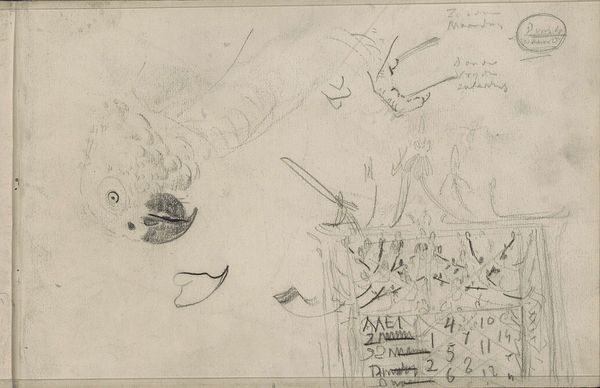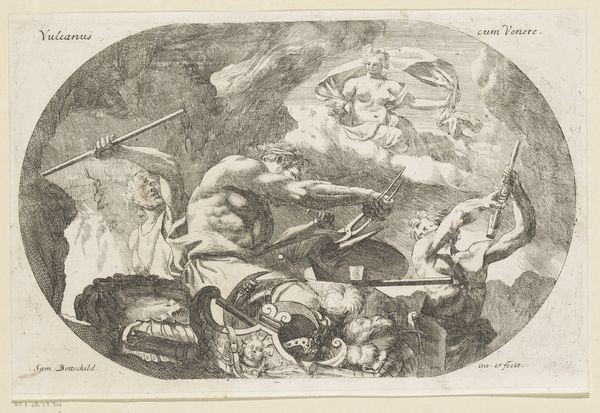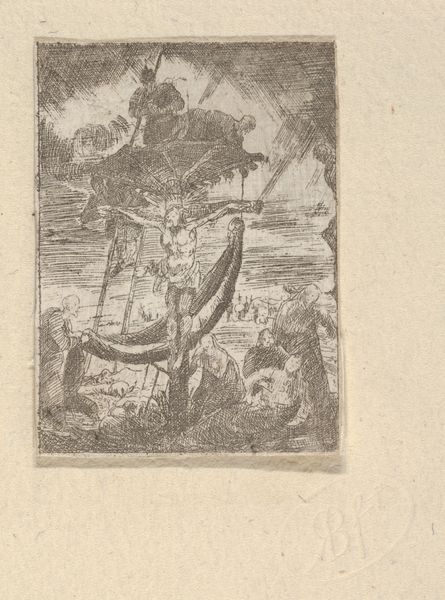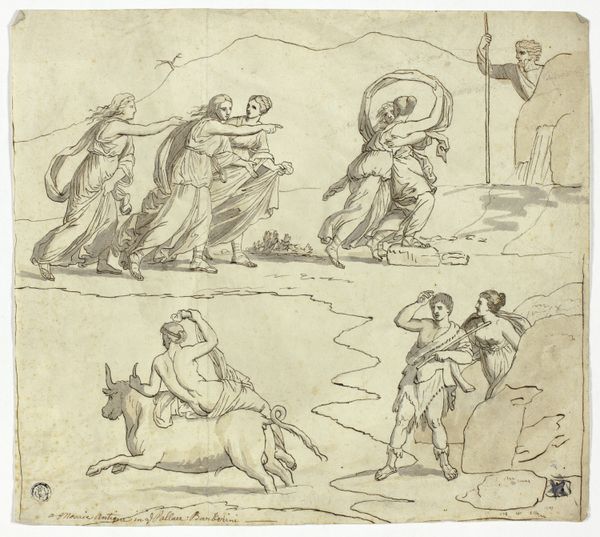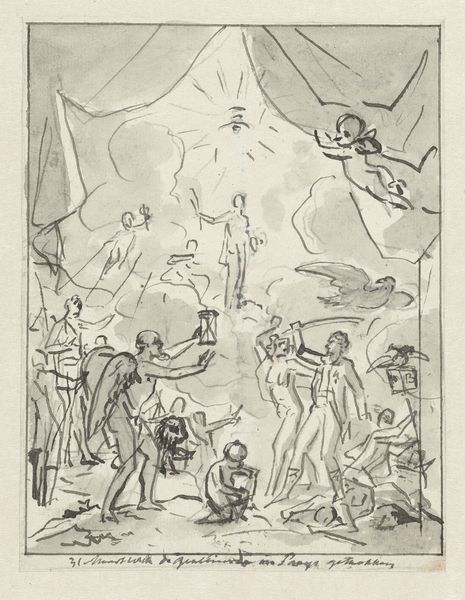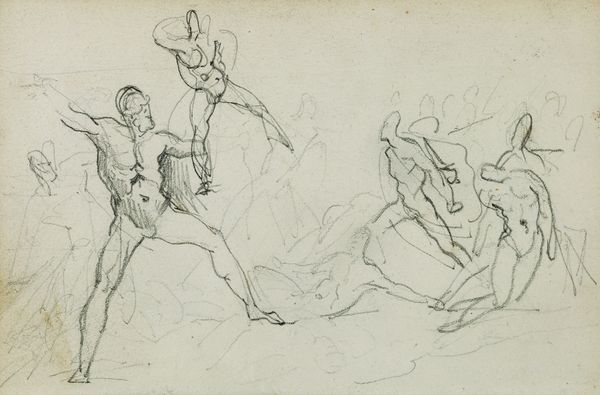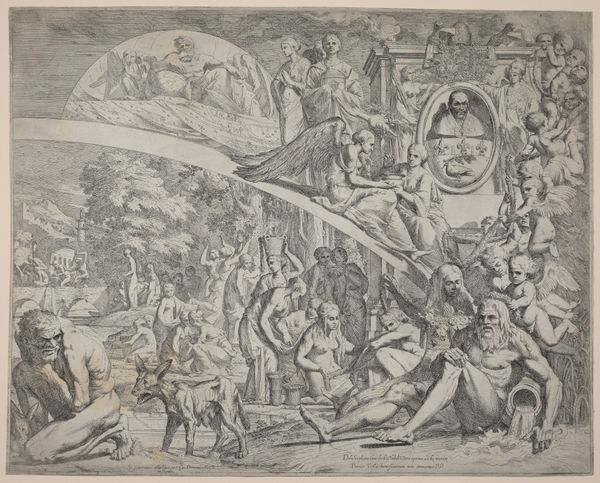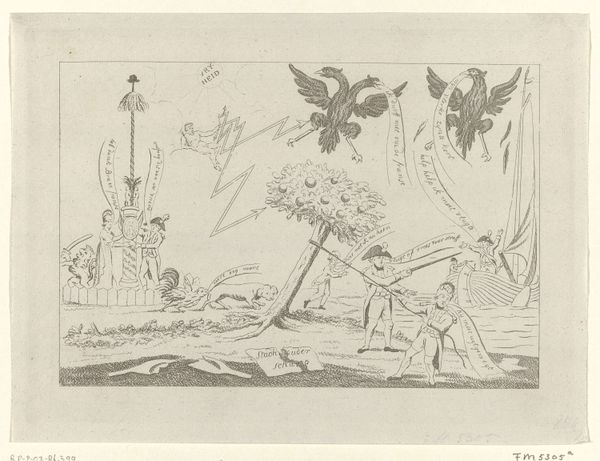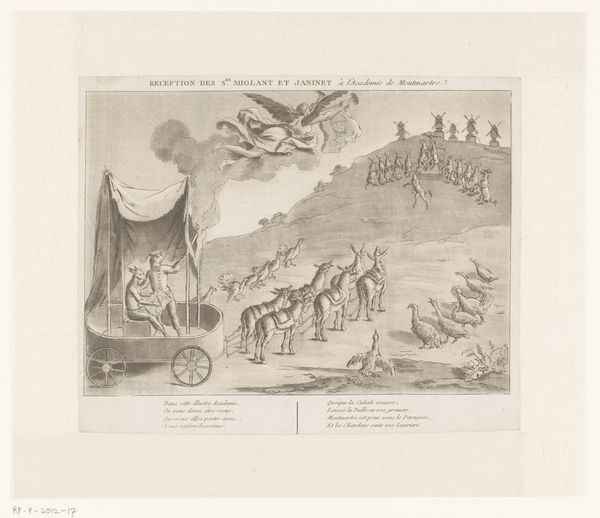
drawing, ink, pen
#
drawing
#
16_19th-century
#
pen illustration
#
german-expressionism
#
fantasy-art
#
figuration
#
ink
#
folk-art
#
romanticism
#
pen
Copyright: Public Domain
Curator: Today, we’re observing "Wie ein Landsknecht in die Hölle kommt," or, “How a Landsknecht Comes to Hell,” a pen and ink drawing held at the Städel Museum. Editor: It feels frenetic, doesn't it? Chaotic, almost like a swirling vortex centered around the central figure. The monochromatic palette only intensifies the sense of turmoil. Curator: Indeed. Let’s consider the composition. The drawing is dominated by the central figure, a Landsknecht, rendered with a surprising anatomical accuracy, though exaggerated musculature hints at idealized strength. His positioning and size, relative to the surrounding demons, creates a clear hierarchy. Editor: He stands with his sword raised high. Shield in the other hand, complete with a skull emblem – certainly, a universal memento mori. Notice, too, the almost theatrical quality to the demons, grotesque but oddly… staged. A bit like actors performing archetypes of fear. Curator: Precisely. And if we consider the symbolic weight of this image, we can't ignore the Landsknecht himself. Historically, they were mercenary soldiers, known for their brutality and moral flexibility. He may signify hubris in life and an impending underworldly judgment of such men, which accounts for his being surrounded by various demons. Editor: What about the overall structure? The lack of color throws the focus on form, so do we consider line weight in terms of structure here? Note also the varying level of finish: Some figures are crisply rendered, others fade into the background haze. Does this denote layers of consciousness or perhaps literal levels of Hell? Curator: Without definitive dating, it's difficult to contextualize the technique absolutely. Still, the stylistic features clearly nod towards a tradition rooted in both Romanticism and German Expressionism, using figuration. Consider the way the figures blend seamlessly into a grotesque environment. There is definitely a nightmarish quality evoked here. Editor: For me, it is powerful because it encapsulates both the personal struggle, represented by the Landsknecht facing his inner demons, as well as the broader social anxieties around militarism. Thanks for highlighting the symbolic dimensions! Curator: A potent interplay between form and content to examine, certainly.
Comments
No comments
Be the first to comment and join the conversation on the ultimate creative platform.
